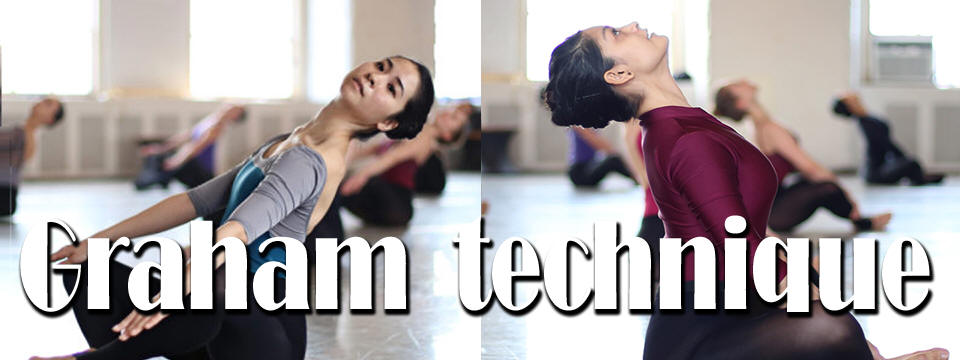|
|
 |
|
The expression "Graham technique" is a style and pedagogy of the modern dance movement and was registered as a trademark before the death of the creator of the method from which it takes its name; Martha Graham (1894-1991) American dancer, teacher and choreographer. The Graham technique has been called the "cornerstone" of American modern dance, known for its extraordinary qualities of "floorwork" exercises and is taught all over the world. It is based on the opposition between "contraction and release" (Contraction and Release), a concept based on the cycle of the breath, and uses different parts of the body in opposition to each other to create spirals for dramatic tension. It also incorporates formal exaggerations of "natural" movements The Graham technique is considered the first codified modern dance technique, like that of classical ballet, but there are big differences between the Graham technique and that of ballet (classical dance). Contraction and releaseThe fundamental movement of Graham's technique is the cycle of "contraction" (collection of energy in one point of the body) and of "release" (diffusion of energy throughout the rest of the body), which he developed in connection with the rhythmic cycle breathing. A classic Graham contraction is a movement that originates from the deep pelvic muscles. These muscles, together with the abdominal muscles, pull the spine in a concave arc from the coccyx to the nape, with the pelvis bent and the shoulders forward. [3] [7] The spine becomes longer, not shorter, in a contraction. [19] The force of the contraction can be used to move the body through space or change its trajectory. The release corresponds to a very active outward propulsion of energy. Contraction is associated with exhalation and release on inhalation, although this connection can sometimes be purely conceptual. SpiralThe second fundamental concept in Graham's technique is the spiral. The basic "spiral" position consists of rotating the spine about 45 ° around its vertical axis, so that a dancer facing the stage would have her shoulders aligned with the "Via Triumphalis", an imaginary line parallel to a diagonal of the stage from corner to corner. [9] In a "hip spiral," the movement begins subtly at the hip and develops at maximum tension by pulling the opposite shoulder blade away from the starting hip. Graham's falls use contractions and manipulate the body's center of gravity in order to control the timing and direction of a fall. There are a wide range of rigidly coded Graham falls, including standing and moving falls; falls from elevation and falls to feet, which can be directed forward, backward, to the side or in a split. In almost all falls, the dancer exerts a strong upward force to counteract the force of gravity and suspend the body in space for artistic effect. Other aspectsThe Graham technique uses the hands in unique ways. They are generally meant to be active and purposeful, not decorative. They are often held in a stylized cupped position, with the fingers extended and pulled towards the palm. The arms typically move in response to the impulse coming from the back or shoulders. Arm movements were often not specified in Graham's early work and there is a variation between the use of the port de bras (carrying the arms) by Graham's teachers. |



